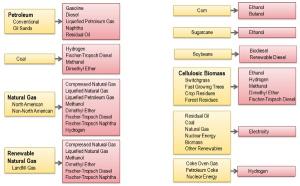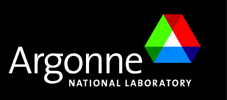

2011 Spring Meeting
What is the greenhouse gas (GHG) emissions comparison of algal-derived biofuels as compared to petrochemical fuels? For a new fuel to be considered renewable, it needs to generate 50% less GHG emissions than existing fossil fuels systems. Edward Frank, of Argonne National Laboratory discussed his group's efforts to create the evaluation tools necessary to perform that analysis for algae derived biofuels, be they biodiesel or other refined fuels.
GREET-ings

The Greenhouse Gases, Regulated Emissions, and Energy Use in Transportation Model (or GREET ) is a toolset by the U.S. DOE and Argonne that details more than 100 fuel pathways including petroleum fuels, natural gas fuels, biofuels, hydrogen and electricity produced from various energy feedstock sources, from well to pump. For any process included, emissions are considered upstream, downstream, and at the actual process, and similarly for all inputs and outputs. The methods used to calculate or estimate emission debits or credits include displacement, allocation and process energy use, recognizing that you will get different results depending upon which method that you use.
Progress to Date
The objectives of the project were set to include:
- Assemble a life cycle inventory for algal biofuels
- Implement an algae life cycle analysis (LCA)
- Enable and stimulate additional LCA communications
The methods chosen to accomplish the objectives are:
- To extend the GREET system models to include the unique algal processes
- Build a helper tool (an algae process model) with more parameter flexibility than exists in GREET for other fuels.
Create a life cycle inventory of the process, as follows:
- Growth and first dewatering
- Nutrients usage (and creation)
- CO2 supply, including transportation
- Further dewatering steps
- Extraction of the lipids/oils
- Conversion of the oils (transesterification, for example)
- Recycling of the unrefined biomass
- Co-products generated (e.g., biogas from anaerobic digestion, biomass fuels or feeds, etc.)
Some Preliminary Results
The first thing to remember is that there is actually no commercial or even demonstrable process for the creation of fuels from algae. So, this first cut at the LCA will have many more assumptions than when there are fixed and measureable processes in existence. Regardless, the first run-through using similar model data yielded results similar with a recent study by Stephenson, and also performed as expected with data similar to Lardon's 4 scenarios that had been previously published. So, the internal workings of the tool(s) seem pass muster at this point.
It is tempting, but dangerous to be too comforted be closeness of the final answer, however. The result is a net increase/decrease, which can hide huge differences in specific parts of the whole. The team is now beginning to apply the tool in an investigation of the key drivers, the variables that most affect the LCA result. This is done through sensitivity analysis, changing the myriad of parameters and exploring many scenarios for the algae pathway.
Want to Contribute?

This work is in its infancy (the first official report is not due for months). The Argonne National Laboratory is looking for help in enhancing the depth and increasing the quality and detail of its LCI data. Process data from researchers and startups would be very helpful. In addition, a core of "early adopters" to work with the LCA tools would also be welcomed. For further information or to offer assistance, contact Edward Frank.


